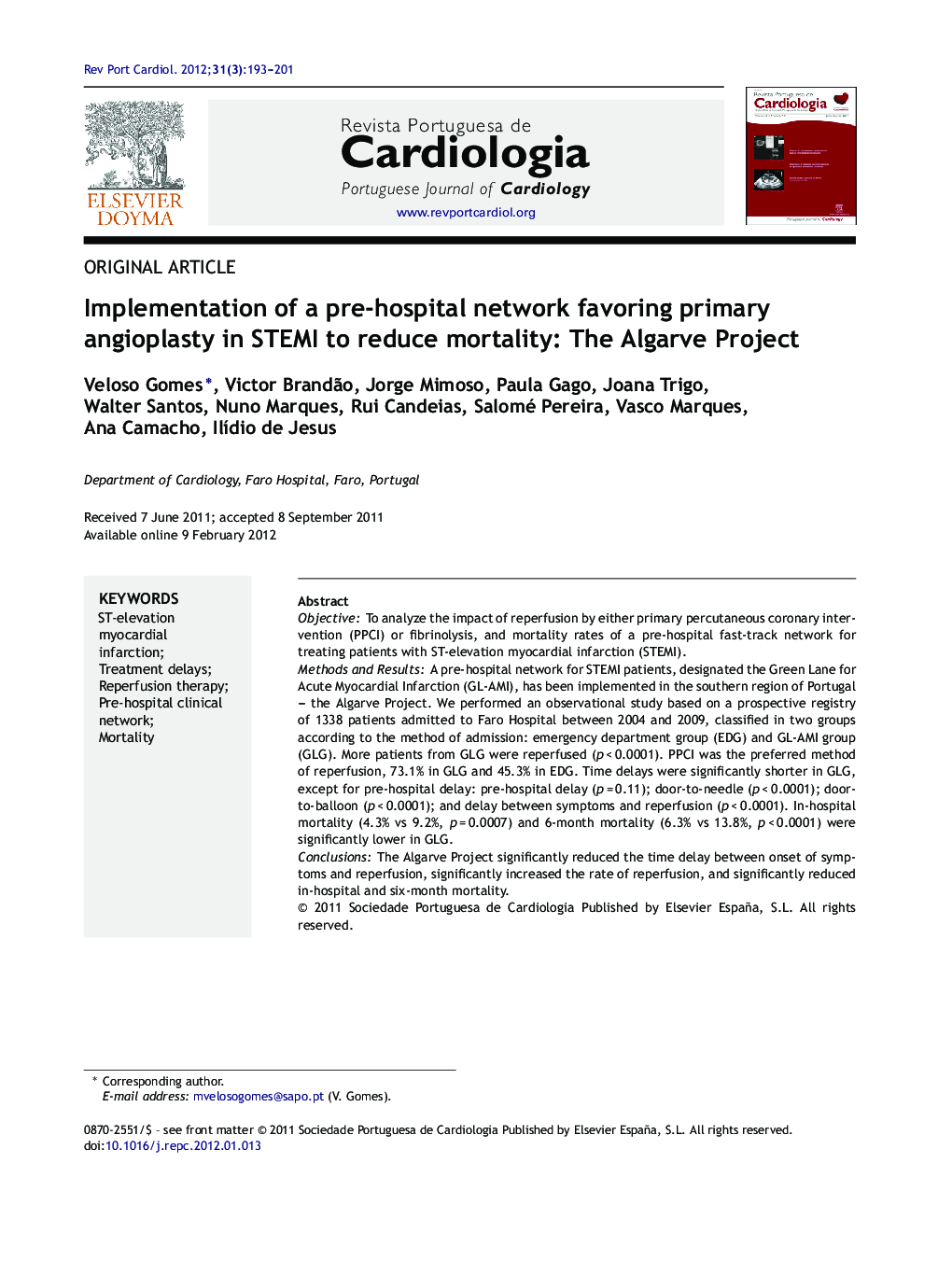| Article ID | Journal | Published Year | Pages | File Type |
|---|---|---|---|---|
| 1126291 | Revista Portuguesa de Cardiologia | 2012 | 9 Pages |
ObjectiveTo analyze the impact of reperfusion by either primary percutaneous coronary intervention (PPCI) or fibrinolysis, and mortality rates of a pre-hospital fast-track network for treating patients with ST-elevation myocardial infarction (STEMI).Methods and ResultsA pre-hospital network for STEMI patients, designated the Green Lane for Acute Myocardial Infarction (GL-AMI), has been implemented in the southern region of Portugal – the Algarve Project. We performed an observational study based on a prospective registry of 1338 patients admitted to Faro Hospital between 2004 and 2009, classified in two groups according to the method of admission: emergency department group (EDG) and GL-AMI group (GLG). More patients from GLG were reperfused (p < 0.0001). PPCI was the preferred method of reperfusion, 73.1% in GLG and 45.3% in EDG. Time delays were significantly shorter in GLG, except for pre-hospital delay: pre-hospital delay (p = 0.11); door-to-needle (p < 0.0001); door-to-balloon (p < 0.0001); and delay between symptoms and reperfusion (p < 0.0001). In-hospital mortality (4.3% vs 9.2%, p = 0.0007) and 6-month mortality (6.3% vs 13.8%, p < 0.0001) were significantly lower in GLG.ConclusionsThe Algarve Project significantly reduced the time delay between onset of symptoms and reperfusion, significantly increased the rate of reperfusion, and significantly reduced in-hospital and six-month mortality.
ResumoObjetivoAnalisar o impacto nas taxas de reperfusão por intervenção coronária percutânea primária (PPCI) ou fibrinólise, e na mortalidade de uma rede pré-hospitalar para o tratamento de doentes com enfarte agudo do miocárdio com elevação do segmento ST.Métodos e ResultadosA rede pré-hospitalar para doentes com enfarte agudo do miocárdio, designada Via Verde para o Enfarte Agudo do Miocárdio (GW-AMI), tem sido implementada na região sul de Portugal - O Projeto Algarve. Realizamos um estudo observacional, baseado num registo prospetivo de 1338 doentes internados no Hospital de Faro entre 2004 e 2009, classificados em dois grupos de acordo com a forma de admissão: grupo do Serviço de Urgência (EDG) e grupo GW-AMI (GTG). Mais doentes do GTG foram reperfundidos (p < 0,0001). PPCI foi o método preferencial de reperfusão, 73,1% no GTG e 45,3% no EDG. Os tempos de demora foram significativamente inferiores no GTG, exceto o atraso pré-hospitalar: Tempo pré-hospitalar (p = 0,11); Porta-agulha (p < 0,0001); Porta-balão (p < 0,0001); Tempo sintomas-reperfusão (p < 0,0001). As taxas de mortalidade hospitalar (4,3% versuss 9,2%, p = 0,0007) e mortalidade aos 6 meses (6,3% versus 13,8%, p < 0,0001) foram significativamente inferiores no GTG.ConclusõesO Projeto Algarve reduziu significativamente os tempos de demora entre o início dos sintomas e reperfusão, aumentou significativamente a taxa de reperfusão e diminuiu significativamente as taxas de mortalidade hospitalar e aos seis meses.
